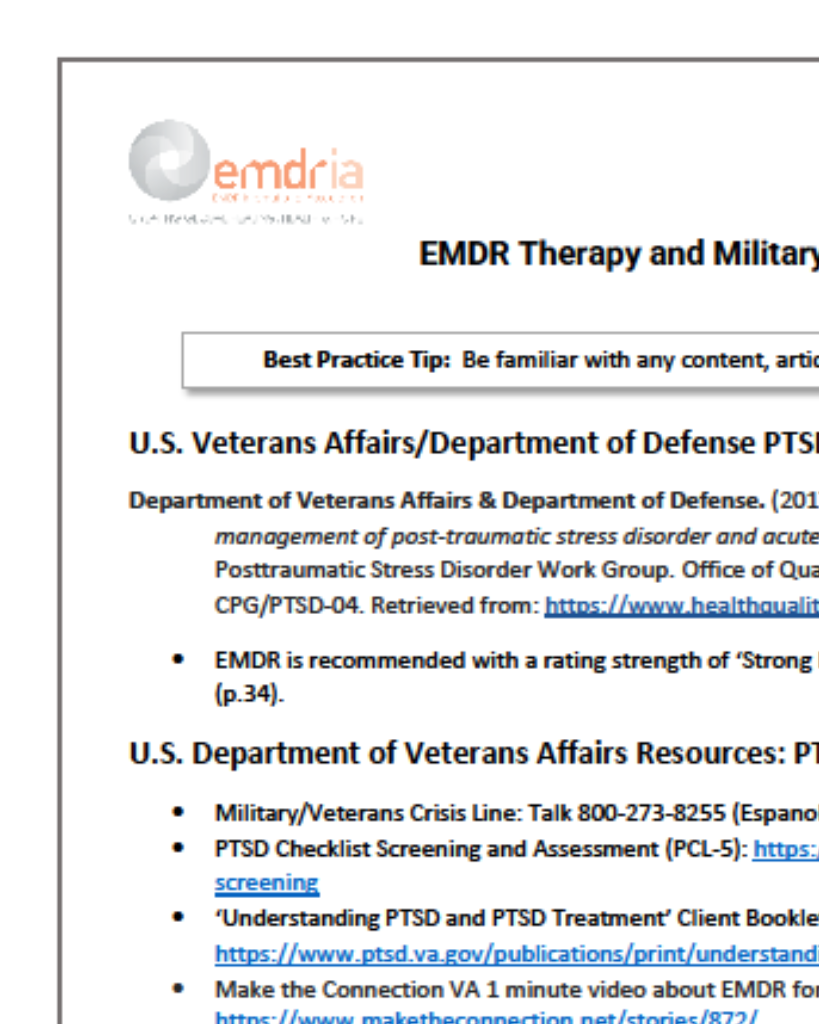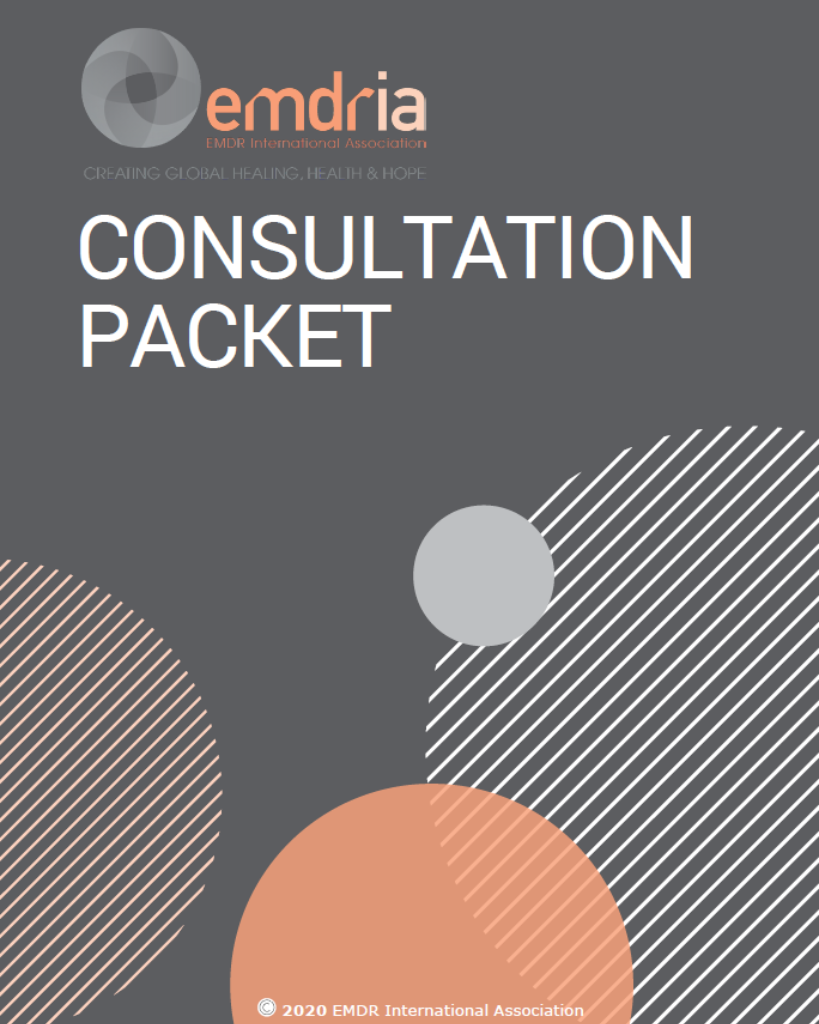A multisite retrospective review exploring the delivery of eye movement desensitization and reprocessing (EMDR) therapy to veterans via telehealth (TH) versus in person (IP)
This study aimed to (a) evaluate the effectiveness of EMDR among veterans and (b) compare outcomes between in person and telehealth modalities.
Article Abstract
“Objective: Eye movement desensitization and reprocessing (EMDR) is strongly recommended for posttraumatic stress disorder (PTSD). Yet, few studies have evaluated EMDR in veterans, and no study has compared in-person (IP) to telehealth (TH) delivery among veterans. This study aimed to (a) evaluate the effectiveness of EMDR among veterans and (b) compare outcomes between IP and TH modalities.
Method: In this chart review, 279 veterans met inclusion criteria (IP n = 139; TH n = 140). Mixed effects and logistic regression models were used for continuous and categorical outcomes, respectively.
Results: PTSD (Cohen’s d = 0.76) and depression (Cohen’s d = 0.56) symptoms improved between EMDR initiation and termination. After controlling for covariates, the IP group (Cohen’s d = 0.85) reported even greater PTSD symptom improvement from initiation to termination compared to the TH group (Cohen’s d = 0.66). There were no differences between groups for treatment completion and achieving reliable change and clinically significant change in PTSD and depression symptoms.
Conclusions: Findings suggest that EMDR is an effective PTSD treatment for veterans. IP and TH modalities largely yielded similar outcomes, highlighting both modalities as effective. These results underscore the importance of further evaluating EMDR delivered via IP and TH to veterans.
Impact Statement
Findings from this chart review of veterans starting eye movement desensitization and reprocessing therapy (EMDR; N = 279) suggest that EMDR was linked with significant improvements in trauma and depression symptoms overall. Telehealth (TH) and in-person (IP) deliveries yielded similar improvements in outcomes (trauma and depression symptoms, reliable change, clinically significant change, and treatment completion), highlighting TH as an effective way to deliver EMDR. The IP group had even greater improvements in trauma symptoms than the TH group, underscoring the need for further investigation of factors impacting EMDR delivery via virtual care to veterans.”
—Description from publisher
Article Access
Purchase/Subscription Required
Fairbanks, C. L. D., Penix-Smith, E. A., Glitsos, S. C., Keener, K. D., Giorgio, J. M., Poulos, K. H., Albinson, L. F., Baker, C. E., McGuirl, C. A., & Wisniewski, S. P. (2025). A multisite retrospective review exploring the delivery of eye movement desensitization and reprocessing (EMDR) therapy to veterans via telehealth (TH) versus in person (IP). Psychological Trauma: Theory, Research, Practice, and Policy, Online. https://doi.org/10.1037/tra0001917
Date
May 28, 2025
Creator(s)
Christina L. D. Fairbanks, Elizabeth A. Penix-Smith, Stephanie C. Glitsos
Contributor(s)
Kayla D. Keener, Jeannette M. Giorgio, Katherine H. Poulos, Lauren F. Albinson, Courtney E. Baker, Colleen A. McGuirl, Sonia P. Wisniewski
Topics
PTSD
Client Population
Military/Veterans
Practice & Methods
Comparative Studies, Telehealth
Publisher
American Psychological Association
Rights
PsycInfo Database Record (c) 2025 APA, all rights reserved
APA Citation
Fairbanks, C. L. D., Penix-Smith, E. A., Glitsos, S. C., Keener, K. D., Giorgio, J. M., Poulos, K. H., Albinson, L. F., Baker, C. E., McGuirl, C. A., & Wisniewski, S. P. (2025). A multisite retrospective review exploring the delivery of eye movement desensitization and reprocessing (EMDR) therapy to veterans via telehealth (TH) versus in person (IP). Psychological Trauma: Theory, Research, Practice, and Policy, Online. https://doi.org/10.1037/tra0001917
Audience
EMDR Therapists
Language
English
Content Type
Article, Peer-Reviewed
Access Type
External Resource





